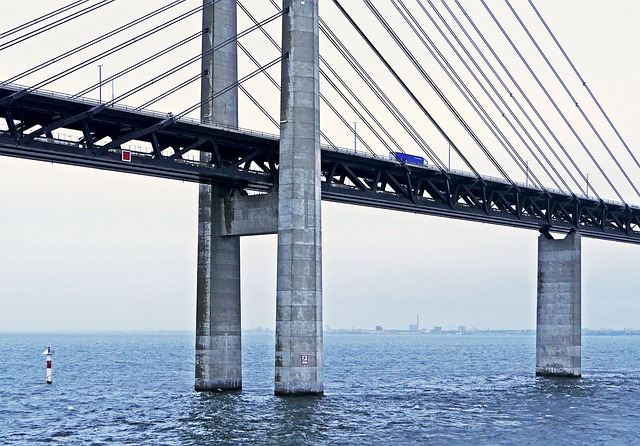Truck Tolls and Infrastructure: Funding the Roads of Tomorrow
The infrastructure we rely on for transportation is the backbone of our economy, society, and connectivity. Among the various modes of transport, trucks play a vital role in freight movement across vast distances. As we advance into the future, the challenges facing this industry are steadily intensifying, especially when it comes to funding the roads we depend upon. This article delves into the role of truck tolls in infrastructure funding, examining current models, potential improvements, and innovative approaches that can help build the roads of tomorrow.
The Current State of Truck Tolls
Truck tolls have become an essential source of revenue for maintaining and upgrading infrastructure in many countries. These toll systems are designed not only to generate funding but also to manage traffic congestion and promote efficient freight transportation.
In the United States, the Federal Highway Administration (FHWA) oversees the collection and distribution of highway funds, with tolling being a crucial component. States are incentivized to utilize tolls as a method of financing road improvements, especially on busy interstate highways that bear the brunt of freight traffic. However, the implementation of truck tolls varies significantly across states and regions, leading to disparities in infrastructure quality and funding availability.
The Purpose of Truck Tolls
Truck tolls serve multiple purposes. They aim to:
- Generate essential revenue for maintaining and constructing roadways.
- Reduce congestion by encouraging freight movement at off-peak hours.
- Promote sustainable transportation alternatives.
- Adapt infrastructure to accommodate the increased traffic demands caused by e-commerce and globalization.
The Economic Implications of Truck Tolls
While truck tolls are beneficial for infrastructure funding, they also have substantial economic implications for the trucking industry and the broader economy. The need for freight transportation in a global market has amplified, with trucking companies facing increased operational costs due to toll expenses.
The balance between effective tolls and maintaining economic viability for trucking firms is delicate. In many cases, tolls represent a substantial cost that companies must factor into their logistics and pricing strategies. As toll rates increase, there can be a ripple effect across supply chains, ultimately impacting consumer prices.
The Burden on the Trucking Industry
As toll rates fluctuate, trucking companies may have to grapple with various challenges:
- Increased shipping costs that could discourage competitiveness in both domestic and international markets.
- The need for better route planning to avoid more expensive toll roads.
- The potential for reduced profit margins in an industry that operates on thin margins.
For smaller trucking firms, the financial impact can be significant, making it harder for them to compete with larger companies that can absorb costs more effectively. Addressing these concerns requires a thoughtful discussion among policymakers, industry stakeholders, and local communities about equitable toll structures.
Innovative Funding Mechanisms
As the demands on transportation infrastructure continue to grow, the existing systems of truck tolls may need to evolve. Innovative funding mechanisms are critical to ensuring roads remain safe and effective for future generations. Several promising approaches are emerging:
Dynamic Pricing Models
Dynamic pricing involves adjusting toll rates based on traffic volumes and congestion levels. This system can encourage trucks to utilize less popular routes during peak hours, thus reducing overall congestion and wear on roadways. Studies have shown that implementing dynamic pricing can significantly enhance revenue generation while providing more options for truck drivers based on real-time conditions.
Congestion Pricing
Congestion pricing is a form of dynamic pricing specifically targeting high-traffic areas. By charging higher fees during peak traffic times and lower fees during off-peak hours, this model can incentivize trucks to plan their trips more strategically. The revenue generated from congestion pricing can be reinvested in local infrastructure improvements, further benefiting the communities affected by truck traffic.
Toll Credits and Incentives
To mitigate the financial burden on the trucking industry, policymakers could consider implementing toll credits or discounts for companies that use environmentally friendly vehicles or participate in sustainability initiatives. This approach not only promotes greener transportation options but also fosters a collaborative relationship between infrastructure funding and environmental stewardship.
Public-Private Partnerships (PPPs)
Public-private partnerships have emerged as a potential solution for funding infrastructure projects, allowing for collaboration between government entities and private companies. By sharing resources, expertise, and risk, PPPs can lead to more efficient road construction and maintenance processes while providing funding through tolls.
Through PPPs, private entities may take on the responsibility of designing, building, and operating toll roads. In return, they receive revenue from toll collections, which can enhance project financing and enable quicker completion timelines. However, crafting effective PPP agreements requires transparency and fairness to balance the interests of both public and private sectors.
The Road Ahead: Challenges and Opportunities
As we look to the future, the trucking industry and infrastructure funding face a series of challenges and opportunities. Factors such as technological developments, sustainable practices, and evolving consumer preferences will shape the trajectory of truck tolls and road maintenance strategies.
The Impact of Technology
Advancements in technology are changing the face of the trucking industry. From the rise of autonomous trucks to the implementation of telematics systems for route optimization, technology is enhancing operational efficiency. These technological innovations could integrate with toll systems, leading to streamlined toll collections and more accurate usage assessments.
For example, electronic toll collection systems can provide real-time data about truck movements, helping transportation officials identify trends and adjustments needed for infrastructure investments. Such systems can also contribute to more accurate dynamic and congestion pricing models, ensuring fairness and efficiency.
Sustainability and Environmental Considerations
As the world grapples with climate change, the trucking industry must also consider its environmental impact. Future tolling models may need to incorporate sustainability metrics, such as emissions-based tolls that charge vehicles based on their environmental footprint. By encouraging the adoption of cleaner technologies, such toll systems can support both funding needs and environmental goals.
Community Engagement and Equity
The conversation surrounding truck tolls and infrastructure must include the voices of local communities affected by heavy truck traffic. Inviting input from residents can ensure that toll structures do not disproportionately impact lower-income populations. Achieving equity in tolling can promote a sense of shared responsibility for maintaining infrastructure while addressing community concerns.
Conclusion
The intersection of truck tolls and infrastructure funding is a complex landscape that requires innovative thinking and collaborative solutions. As trucking continues to thrive within a global economy, the effective management of infrastructure is paramount. By exploring dynamic pricing, public-private partnerships, and a focus on sustainability, we can develop a tolling framework that meets the needs of the trucking industry while supporting the building of resilient, dependable roads for future generations.
In summary, the roads of tomorrow depend on a multi-faceted approach that recognizes the crucial role trucks play in our economy. As stakeholders from various sectors engage in thoughtful dialogue, the path forward can be paved with strategies that build a strong infrastructure while allowing for the continued growth and efficiency of the trucking industry.



